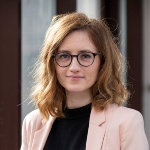
As a PhD student, as a postdoc with a habilitation project or as the head of a junior research group, as a junior professor and as a tenure track professor, you are making an important contribution to the further development of science and to meeting current and future challenges in business and society. Depending on your career stage, with your teaching you are contributing to the best possible qualification of the actors of tomorrow.
A doctoral degree is proof that you possess an aptitude for scientific work. This forms the basis of a scientific career and, increasingly, a career in business.
As a postdoc, you are on course to pursue an academic career and are investigating your future career options. If you wish to continue on this path, it is important to select a suitable field of research at this stage. You can then progress to habilitation, lead a research group, or embark on a junior or tenure-track professorship.
A junior professorship fully integrates you into the professoriate with almost all rights and duties. At the same time, the reduced teaching load gives you the opportunity to develop your academic profile. The framework or scope of the junior professorship is determined in advance and gives you numerous opportunities to decide your academic focus.
With the tenure track professorship, you can combine many of the advantages of the junior professorship with a predefined, plannable career path. However, in terms of your academic research and teaching profile, you are expected to pursue the predetermined focal points of the prospective lifetime professorship.
Whether you are already with us and want to step up to your next career level, or whether you want to join us for your further career path – the University of Stuttgart offers excellent conditions in many respects. And we are constantly working to increase the predictability of academic careers, to support the reconciliation of work and family life, and to promote diversity.
Qualification, counselling, mentoring
In addition, we support you with information and advice on career orientation, with various services in the area of qualification, and with mentoring programs. Our goal is for you to become responsible personalities who think globally and inclusively, with the best possible preparation for high-level positions in science, industry and society.
The Graduate Academy of the University of Stuttgart is the central institution for the promotion of early career researchers at the University of Stuttgart. Graduate Academy of the University of Stuttgart offers you a wide range of services that will prepare you for various career paths in science, industry and society and are tailored to your respective career stage.
We will support you through the various challenges on route to gaining a Junior or Tenure Track Professorship with our certificate program “On Track to University Professorship”. This program will introduce you to the topics of research funding, leadership skills and didactics, targeted to help you prepare for your future academic career with additional qualification and consultation courses.
Mixing a university career and family life
The University of Stuttgart sees itself as a family-friendly university, and continuously strives towards implementing this ethos in its structures, processes and instruments. The ability to combine work, university studies and family is ensured thanks to various support services which encourage a family-friendly working and scientific culture. Different services are explicitly aimed at providing the necessary space for scientific research and developing your career, for example when you are starting a family.
Excellent conditions for research, studies and cooperation
Contact

Judith Tonhauser
Prof. Dr.Vice Rector for Early Career Researchers and Diversity

Katharina Wilhelm
Dr.Personal Assistant to the Vice Rector for Early Career Researchers and Diversity








